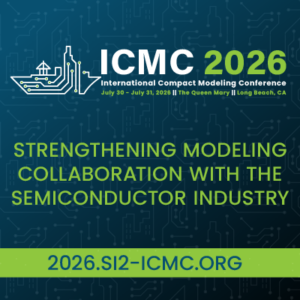
Every spring, the ESD Alliance, a SEMI Technology Community, organizes a get together where industry executives and experts gather to network and talk about trends in the electronic design automation industry.
The theme of this year’s event, once again co-hosted by Keysight, is “How Multi-Physics is Reshaping Chip Design and EDA Tools.” It will be held Thursday, May 22, starting at 5:30 p.m. at Keysight’s office in Santa Clara, Calif.
Our event speakers and panelists are all technically involved with multi-physics and will share their experiences and opportunities and challenges still ahead. Moderated by Ed Sperling, Editor-in-Chief, Semiconductor Engineering, panelists include: Bill Mullen, Ansys Fellow at Ansys; John Ferguson, Sr. Director, Product Management from Siemens EDA; Chris Mueth, Sr. Director, New Markets and Strategic Initiatives of Keysight; and Albert Zheng, Sr. Engineering Group Director with Cadence.
Registration is open. Pricing for members is free. Non-member pricing is $49. Register at: https://tinyurl.com/bucunc7j.
In a perfect world, multi-physics analysis would be seamlessly integrated within the chip/system design flow resulting in early detection and correction of physical issues.
While the industry isn’t fully there yet, there is rapid adoption of these new technologies. With system complexities ever-increasing, chip designers are being required to expand their scope and responsibilities beyond “the chip.” Modern semiconductor-based systems often include novel packaging of devices and substrates in form factors that minimize system area, while simultaneously optimizing for performance, power and reliability.
While traditional analysis tools continue to play an important role in the design process, multi-physics tools are rapidly being adopted to address system-level issues that must be considered to bring new products to market. In order to achieve market success, these products must meet broad specifications including reliability and safety in addition to typical chip performance issues such as performance, size, energy and throughput.
The term multi-physics covers the range of physical effects that are typically not within the scope of traditional chip design analysis tools. These effects include (but are not limited to) mechanical stress, heat, electromagnetic interference and even packaging and cooling.
Mechanical stress must be considered in situations where discrete devices (such as chiplets) are interconnected by stacking or sharing a substrate. During operation, heat may cause the components to undergo thermal expansion that can lead to mechanical strain that impacts functioning or leads to system failure.
Heat generated must be analyzed to understand how it propagates through the system. Hot spots may lead directly to device performance issues and induce mechanical stress that causes further issues.
Electromagnetic interference typically arises due to high-speed signals within the system that can interact with other signals within the system or other nearby system components. These interactions can lead to performance issues or even system failures.
Packaging and cooling analysis is necessary to understand how to mitigate the effects of heat and mechanical stress on the chip/system and to other nearby components.
Join us at the 2025 Executive Outlook event and gain insight into how these rapidly evolving technologies are changing chip and system design flows. The event will be held at Keysight, Building 5, 5301 Stevens Creek Blvd in Santa Clara.
About the ESD Alliance
The ESD Alliance, a SEMI Technology Community, offers initiatives and activities that bring value to our entire industry including:
- Coordinating and amplifying the collective and regional voices of our industry.
- Continually promoting the value our industry delivers to the global semiconductor and electronics industry.
- Addressing and defending threats and reducing risks to our industry.
- Achieving efficiencies for our industry.
- Marketing the attractiveness of the design ecosystem as an ideal industry for pursuing a career.
- Enabling networking, sharing and collaboration across our industry.
If your company is not currently a member, shouldn’t it consider joining the ESD Alliance and SEMI? Contact me at bsmith@semi.org to get the discussion started.
Also Read:
Andes RISC-V CON in Silicon Valley Overview
SNUG 2025: A Watershed Moment for EDA – Part 1
DVCon 2025: AI and the Future of Verification Take Center Stage
Share this post via:








Quantum Computing Technologies and Challenges